Rescue remedies: Adam Liaw's tips to fix a dish that's not quite right
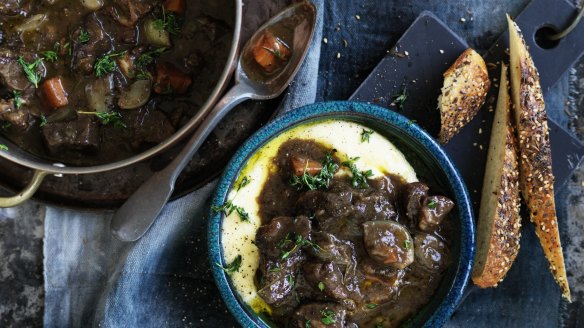
It happens to all of us – we get to the end of cooking and whatever it is we're making is just not quite right. It could be anything from an outright disaster to something that just hasn't worked out as planned.
So what do you do when you're trying to get food on the table but it's all gone wrong somewhere along the line? Never fear, because the doctor is here to diagnose what ails your dinner.
Symptom: Just not particularly tasty
Treatment: If tasting a dish prompts you to say "it needs something", that something is usually salt. Seasoning – a term which, as Western chefs use it, means the addition of salt – is all-important, but perhaps because it's repeated over and over, the message sometimes falls on deaf ears. Most dishes that seem a little off can be fixed simply with a little more assertive seasoning.
Personally, I think the addition of umami (savouriness) plus salt is often better than salt alone for fixing a not-particularly-tasty dish.
Taking a leaf from Thai cooking, where a dash of fish sauce can be added at any point up to and including at the table, try adding a touch of fish sauce or soy to a liquid-y dish that isn't quite tasty enough. Not so much to make it taste fishy, but just enough to give it a savoury boost.
Another way to boost the flavour of a stew or similar is to let it cool and then reheat it again. Over time, low-temperature Maillard reactions significantly boost the umami of dishes. If you've ever thought a stew or curry tastes better the next day it's because it does, and it's low-temperature Maillards you have to thank for that.
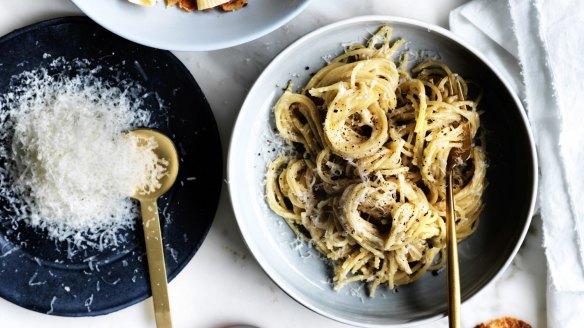
Symptom: Watery or weak
Treatment: A watery dish can be one where the seasoning isn't quite right (as above) or it might just have too much liquid. Try removing solids and reducing down the liquid until it's rich and flavourful.
If reduction alone isn't going to get you there, you might have to thicken your sauce so that it clings to the ingredients. The classic French finishing of beurre manié (kneaded butter) thickens and richens anything from a coq au vin to a beef Bourguignon. Make it by mixing together equal volumes of plain flour and butter (for example, 1 tablespoon of flour and 20 grams of softened butter) and whisking it into your sauce or stew towards the end of cooking.
If it's a stir-fried dish, tossing over heat with a little cornflour slurry is a step that's often missed, but it thickens the juices that collect in the wok, coating the ingredients for a much more flavourful dish.
For pastas, the process of mantecare is where the sauce is tossed with the pasta and often a bit of the pasta water itself. Like the cornflour slurry of Chinese cooking, the starch from the pasta water thickens the sauce and helps it cling to the pasta.
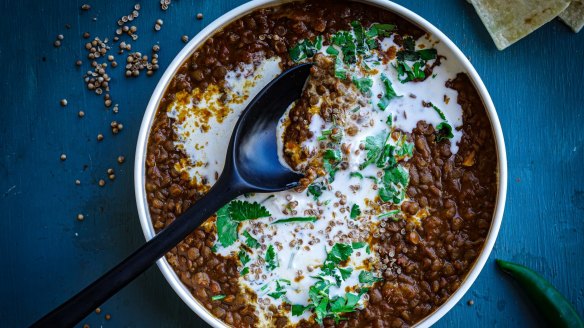
Symptom: Insipid, lacking richness
Treatment: Adding richness to a dish usually means improving the mouthfeel. In French cooking this is often done by "mounting" a sauce or dish, by whisking cubes of cold butter into a hot liquid to emulsify it.
For foods from the Indian subcontinent, one step that's often missed is tadka, or tempering. Spices are flashed in hot ghee or oil before they are added to a braised curry or stew. The addition of ghee and spices adds richness and layered flavour. In many dishes from Lebanon, Turkey or the Middle East the addition of nuts fried in butter or ghee has a similar effect.
Symptom: Flat, one-dimensional
Treatment: A dish described as "flat" can often mean that the cooking process has driven off the volatile aromas and this can easily be fixed by the addition of acidity or a touch of bitterness. Think a squeeze of lemon to a salad or roast, a dash of vinegar into a stew, or even a sprinkling of fresh herbs or a grind of pepper. These sour or bitter additions at the end of cooking can bring life back to a dull-tasting dish.
Symptom: Too sweet/sour/salty/bitter
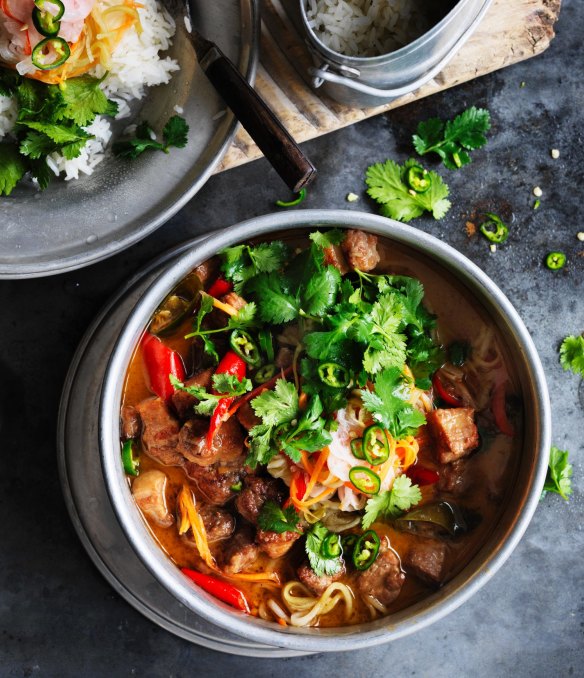
Treatment: If seasoning in Western cooking anecdotally refers to the addition of salt, in Asian cuisines seasoning has a few more dimensions. As well as salt or pepper on a table in China, Thailand, Vietnam or the Philippines (Bicol Express stew, pictured), you might find sugar, vinegars and savoury sauces so that dishes can be custom-seasoned to the five tastes of salty, sour, bitter, sweet and umami.
Our mouths work in strange ways. Our taste buds work relative to each other, so a bit of clever seasoning can fix a lot of problems.
I remember as a child if we were eating fruits that were too sour, my grandmother would sprinkle them with salt. The result was magical. The initial taste was salty, but as it went away our tastes compensated and all of a sudden the sour fruit would taste sweet.
Saltiness and sourness can counteract bitterness. Sourness and savouriness work in opposition to sweetness. Sweetness pulls in the opposite direction to sour.
If your bolognese is suffering from some particularly sour passata, a spoon or two of sugar will pull it back into line.
Symptom: Burnt or overcooked
Treatment: Sadly, this affliction is often incurable. If you're midway through cooking and a stew has burnt by catching at the base of a pot, it's best to get the stew out of the pot as quickly as possible so that the burnt aroma doesn't spread throughout the dish.
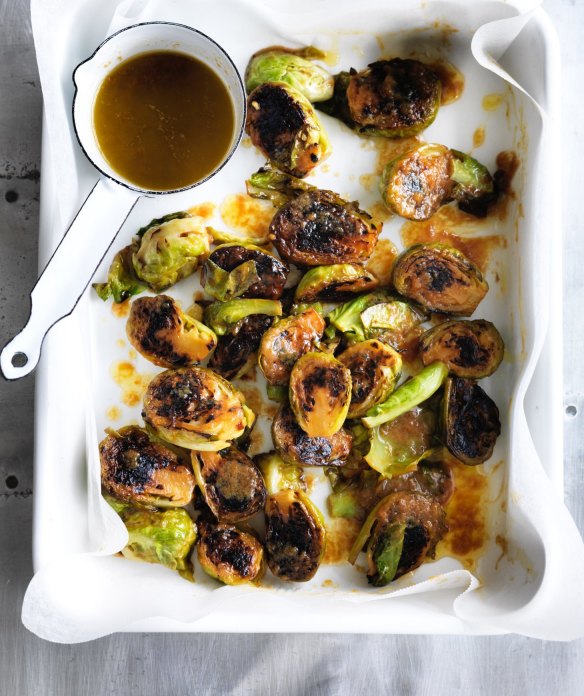
For vegetables, burning them can be a good thing. Cabbages, cauliflower, Brussels sprouts (pictured) and other brassicas are often at their best with a bit of char. Vegetables that have been cooked to soggy might not have the crunch for a side dish, but a quick pivot can turn them into a good soup.
If meat is overcooked it can sometimes be salvaged by resting it for a long time with a bit of oil to retain as much juiciness as possible. The moisture lost by overcooked meat can also be added back by serving with a rich sauce.
Sometimes, however, a dish is truly beyond saving. And at times like that there is little more to do than rustle up some simple sandwiches as a replacement dinner, pour yourself a glass of wine, and live to fight another day.
Appears in these collections
The best recipes from Australia's leading chefs straight to your inbox.
Sign up- More:
- How to
